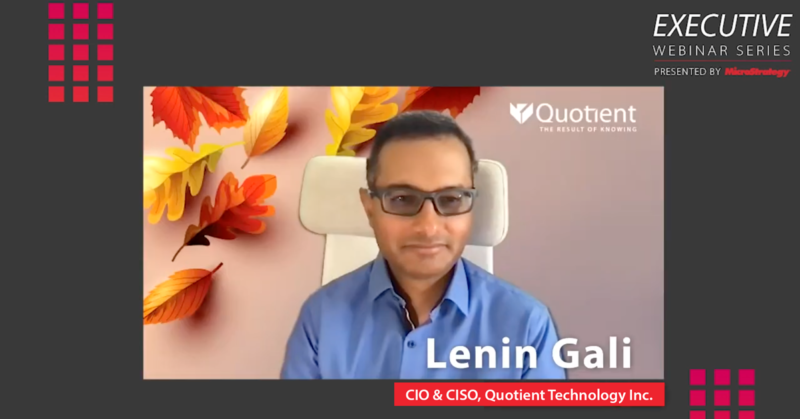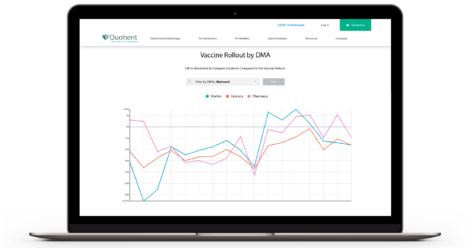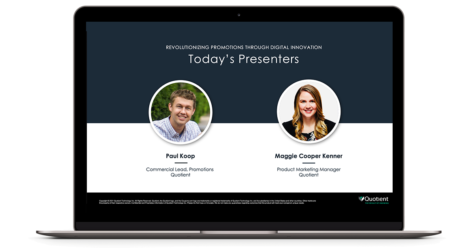Managing Data Privacy and Prevalence in a Digital World
As Chief Information and Security Officer, Lenin Gali is responsible for data security, privacy safe guards, data engineering our products as well as information technology and cyber security at Quotient. He recently spoke with MicroStrategy as part of their Executive Webinar Series about the challenges of balancing data prevalence with security as well as the importance of data accessibility for his internal and external customers.
Read the session coverage below to see how Gali approaches data privacy and security in a digital-first world.
Making Data Visible While Keeping It Secure
Lenin Gali’s focus has been to create balance between increasing the visibility and prevalence of data in day-to-day operations while also maintaining data security.
When dealing with consumer data—whether it's proprietary first-party data or outside data brought in to provide services and build products for customers and the consumer ecosystem—there are privacy laws and legal aspects of data licensing to consider, both for the parties that own the data and the parties that serve and protect it. It’s crucial to keep up to date with any industry changes while also making room for the innovative ideas and products that your team wants to build.
“We embedded people in teams that are actually consuming the data. It makes it easier when you have people that are inside the teams rather than centralizing it in one business intelligence team.”
—LENIN GALI, CHIEF INFORMATION AND SECURITY OFFICER
Gali emphasized the importance of democratizing data. By that, he means that everybody should have access to data without barriers or bottlenecks. Gali and his team work to uncover multiple use cases across the board—whether it’s the type of data used, its purpose or how he plans to deliver that data set in order to provide the necessary services.
Prioritizing the Use of Data Internally and Externally
During the creation of our customer-facing Data and Analytics Platform, Gali and his team discovered that internal teams had similar data needs as their external customers. They created a self-service data portal that enables internal users to take advantage of the same data that we provide to our end customers—improving data accessibility across the board.
It is common for business intelligence teams to drive most of the decisions to give users what they want. Gali’s team flipped the script. They service the data based on requests they receive from internal and external clients. He also embedded people inside the teams that are actually consuming the data, which was easier and more efficient than centralizing one business intelligence team.
“If you empower the use of data and ownership onto the people who want the data, then you get more results and better adoption rates than when you’re centralizing it in an organization to begin with.”
—LENIN GALI, CHIEF INFORMATION AND SECURITY OFFICER
Preparing for the Future of Data
Gali is passionate about cloud-scale ready infrastructure, products and services. He set out a long-term plan with a focused vision that enables his team to make improvements and upgrade the technology products and services they create.
“It’s not about just building something for a year and then figuring things out. I set a roadmap for three to four years. We need to be able to look back and say there we were, here we are and here’s the transformation we went through.”
—LENIN GALI, CHIEF INFORMATION AND SECURITY OFFICER
Looking ahead, Gali is focused on maximizing efficiencies to build more innovative products and services while maintaining cyber security protections to create a balance between data prevalence, data security and data innovation.
For more insight into Quotient’s data and analytics capabilities, contact us at communications@quotient.com or explore our Data and Analytics Platform.



